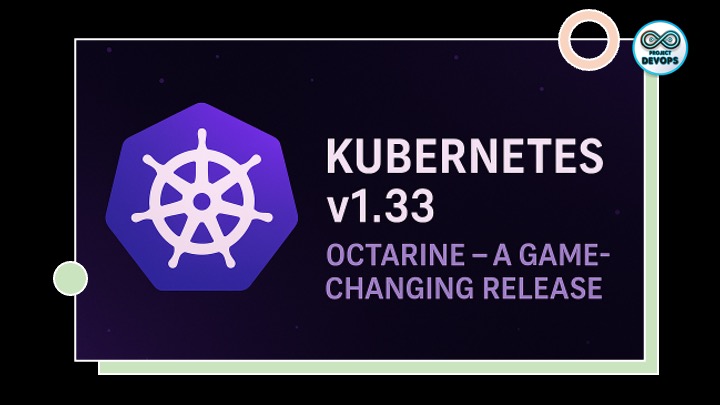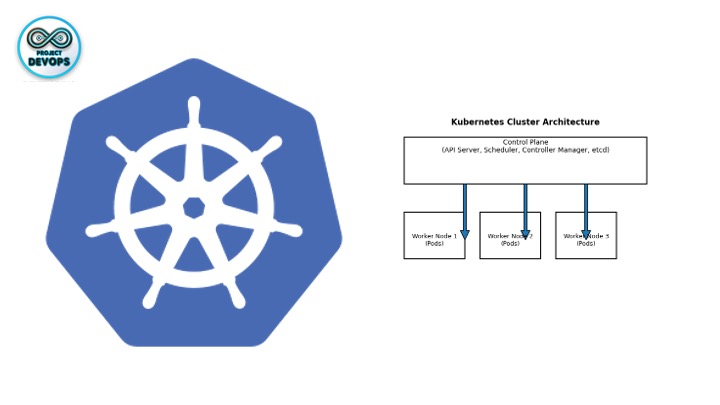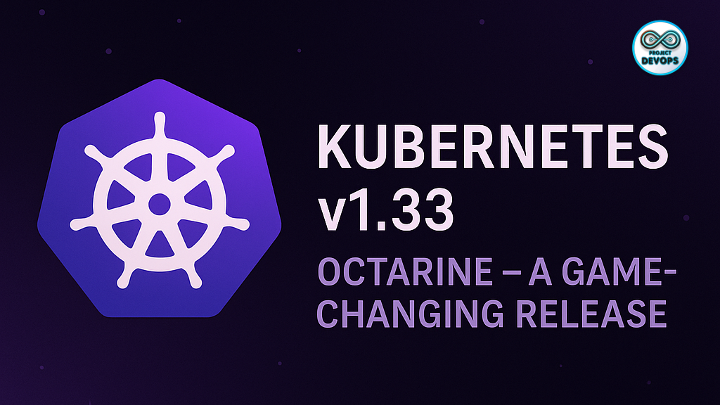Kubernetes v1.33 In-Place Pod Resizing: Resize Pods Without Restarting

Kubernetes has always been about elasticity—scaling workloads up and down depending on demand. Until v1.33 (Octarine release), resizing a pod’s CPU or memory meant deleting and recreating it. This worked fine for stateless apps but caused headaches for stateful workloads like databases, caching layers, or long-running ML jobs.
Now with in-place pod resizing, Kubernetes finally allows changing resource requests and limits on running pods without restarting them. This is one of the most practical improvements in years, and it unlocks new flexibility for operators and developers.
In this blog, we’ll cover:
Why pod resizing is important
How the feature works internally
Step-by-step practical examples
Real-world use cases (databases, ML, CI/CD pipelines)
Limitations and best practices
Why Pod Resizing Matters
Before v1.33, if you wanted to increase memory or CPU for a pod:
kubectl edit deployment my-app
kubectl rollout restart deployment my-appThat meant:
Pod is terminated and a new one is created
Connections to the pod are dropped
Stateful workloads suffer downtime
Adjustments require careful rolling updates
For example, if a PostgreSQL pod ran out of memory, you couldn’t simply add more RAM. You had to restart it, which risked query failures and transaction issues.
With in-place pod resizing, Kubernetes lets you change pod resource requests/limits dynamically while keeping the same pod alive.
How In-Place Pod Resizing Works
The new feature introduces changes at multiple layers:
API Support
ThePod.spec.containers[].resources.requests/limitsfields can now be updated after pod creation.
Kubelet Enforcement
Kubelet applies updates by reconfiguring container cgroups directly (Linux kernel feature), instead of restarting containers.
Scheduler Awareness
The scheduler ensures the node can still satisfy the new resources. If not, the resize request is rejected.
No Restart
The pod keeps the same UID, IP, and process state. Your app continues running seamlessly.
Enabling the Feature
As of Kubernetes v1.33, in-place pod resizing is in beta. You need to enable the InPlacePodVerticalScaling feature gate.
Step 1: Enable Feature Gate
On all cluster components (kube-apiserver, kube-controller-manager, kube-scheduler, and kubelet), add:
--feature-gates="InPlacePodVerticalScaling=true"If you use managed Kubernetes (EKS, GKE, AKS), check provider documentation—many are enabling this by default in v1.33+.
Step-by-Step Example
Let’s see how this works in practice.
Step 1: Deploy a Demo Pod
demo-pod.yaml
apiVersion: v1
kind: Pod
metadata:
name: demo-pod
spec:
containers:
- name: demo-container
image: nginx:1.27
resources:
requests:
cpu: "100m"
memory: "128Mi"
limits:
cpu: "200m"
memory: "256Mi"Apply it:
kubectl apply -f demo-pod.yamlStep 2: Check Pod Status
kubectl get pod demo-pod -o wideYou’ll see it running with 100m CPU and 128Mi memory requests.
Step 3: Resize Pod Without Restart
Now, increase CPU and memory requests/limits:
kubectl patch pod demo-pod \
-p '{"spec":{"containers":[{"name":"demo-container","resources":{"requests":{"cpu":"300m","memory":"512Mi"},"limits":{"cpu":"500m","memory":"1Gi"}}}]}}'Step 4: Verify No Restart Happened
Check pod description:
kubectl describe pod demo-pod | grep -A5 "Limits"Output before resize:
Limits:
cpu: 200m
memory: 256Mi
Requests:
cpu: 100m
memory: 128MiOutput after resize:
Limits:
cpu: 500m
memory: 1Gi
Requests:
cpu: 300m
memory: 512MiNow confirm uptime didn’t reset:
kubectl get pod demo-pod -o jsonpath='{.status.startTime}'You’ll notice the pod start time hasn’t changed—same pod, more resources!
Example 2: StatefulSet Database
Here’s a PostgreSQL StatefulSet that benefits from in-place resizing.
apiVersion: apps/v1
kind: StatefulSet
metadata:
name: postgres
spec:
serviceName: "postgres"
replicas: 1
selector:
matchLabels:
app: postgres
template:
metadata:
labels:
app: postgres
spec:
containers:
- name: postgres
image: postgres:16
resources:
requests:
cpu: "500m"
memory: "512Mi"
limits:
cpu: "1"
memory: "1Gi"
env:
- name: POSTGRES_PASSWORD
value: mypasswordIf queries spike and memory isn’t enough, you can patch:
kubectl patch pod postgres-0 \
-p '{"spec":{"containers":[{"name":"postgres","resources":{"requests":{"memory":"2Gi"},"limits":{"memory":"3Gi"}}}]}}'The database keeps running—no restart, no downtime.
Use Cases
Databases & Stateful Workloads
Increase memory during spikes without downtime.
ML/AI Jobs
Grant more GPU/CPU to training jobs mid-execution.
CI/CD Pipelines
Resize build pods dynamically based on workload size.
Cost Optimization
Start with low resources and scale up only when needed.
Limitations
Currently supports CPU and Memory only (GPU coming later).
Requires feature gate enabled.
Scheduler must validate node capacity—resize fails if not enough resources.
Still in beta: test thoroughly before production use.
Best Practices
Monitor resized pods with
kubectl top podor Prometheus.
Combine with Vertical Pod Autoscaler (VPA) for automation.
Don’t over-commit—resizing fails if node is full.
Use for stateful or critical workloads first.
Conclusion
With Kubernetes v1.33, resizing pods without restarting them is finally possible. This reduces downtime, improves flexibility, and makes resource management much smoother.
For workloads like databases, ML jobs, and CI/CD builds, in-place resizing is a game-changer. Expect this to become the new standard in future releases.
If you haven’t yet, upgrade your cluster to v1.33 and start experimenting—it will change how you manage resources forever.
Comments (0)
No comments yet. Be the first to share your thoughts!

